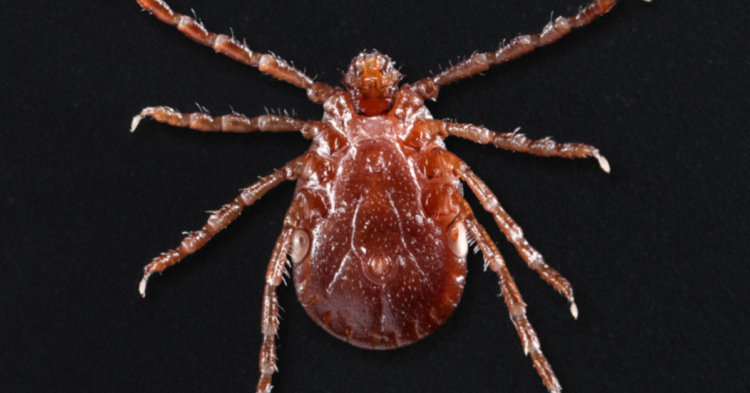There are many good reasons to go outdoors when the weather starts to warm up: sunshine and fresh air and not wearing parkas and all that. But one thing I’ve noticed over the years is that the farther I go into nature, the more likely I am to be bit or stung by something.
I don’t know about you, but I can handle less of that in my life. Unfortunately, there’s a good chunk of nature that sees humans as tasty food sources, and it’s getting worse.
Tick season is always a reminder that summer isn’t just a fun time for humans, but a time for all the pests of the world to come out of hibernation, too.

Ticks aren’t just a nuisance, like houseflies, however. They can spread some nasty diseases, like Rocky Mountain Spotted Fever and the dreaded Lyme disease.
And as if that’s not bad enough, there’s a new tick in town that has some pretty alarming characteristics.
As you might guess by its name, the Asian longhorned tick isn’t supposed to be in North America.

Heck, it’s not even supposed to be in the Western Hemisphere. But it is indeed here, having first been spotted on a farm in New Jersey in 2017.
Nobody is sure how it got there, but because of a quirk in its biology, the Asian longhorned tick probably isn’t going away anytime soon.
See, Asian longhorned ticks don’t need a mate to reproduce.

They can reproduce sexually, but they don’t have to, making them basically self-cloning.
Oh, and they can lay up to 2,000 eggs at a time, so creating large populations doesn’t take a ton of effort on their part. No surprise, they haven’t stayed in New Jersey.
Since that first sighting in 2017, Asian longhorned ticks have been showing up in larger numbers and in a wider spread.

Researchers from Columbia University saw the tick population on Staten Island explode from a single tick to thousands between 2017 and 2018.
According to Science Daily , in one park, the number of ticks found in a 1,000 square meter area rose from 85 to 1,529 in one year.
That’s just a sampling of a larger problem.

As the Lyme Disease Association reported , Asian longhorned ticks have now been confirmed in 10 states: New Jersey, Virginia, West Virginia, Arkansas, North Carolina, New York, Pennsylvania, Connecticut, New Hampshire, and Kentucky.
The troubling thing is that it’s unknown if Asian longhorned ticks in the U.S. carry any diseases that are harmful to humans.

In Australia, China, and Japan, it’s known to transmit a few diseases, including spotted fever rickettsiosis, but according to the CDC , so far no harmful germs have been found in ticks collected stateside.
Now the good news — and yes, there is some good news.

For one thing, it’s not that difficult to take precautions against these ticks — basically, the same precautions you’d take for any tick: long sleeves, long pants, tick repellent and the like.
And if you get a tick on you, don’t panic — just tweeze it off gently and, if you’re concerned about disease, put it in a jar or a sealed bag and have your local health department take a look.
It’s worth noting that, while public health officials are concerned about the Asian longhorned tick, many outdoor enthusiasts aren’t going to let it stop them from living their lives.

As Guy Massey, a Virginia-based horticultural agent, told The Free Lance-Star , “It’s just one of those nasty things that you live with and look out for, but you’re not gonna change your lifestyle. If I see them on me, I pull them off, and I get on with my life.”
h/t: Science Daily

















































